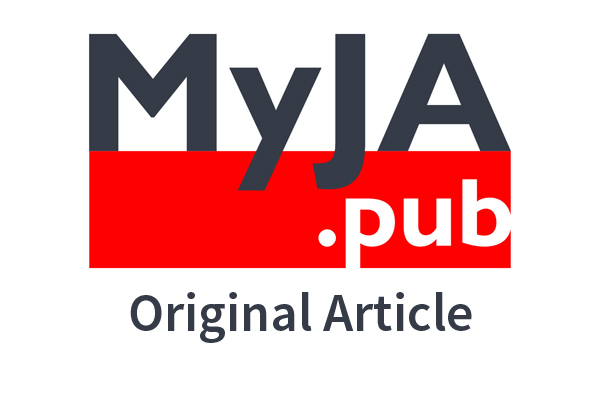Keywords
Abstract
Introduction: Anatomical and physiological changes of the respiratory system in obese patients predispose them to rapid oxygen desaturation during apnoea. Adequate pre-oxygenation before anaesthesia induction allows a period of safe apnoea. The efficacy of pre-oxygenation with facemask versus facemask with nasal prong was compared. The time taken for expired end-tidal oxygen (FEO2) to reach 0.8 (T0.8) from commencement of pre-oxygenation (T0), and time to oxygen desaturation to 95% (T95%), following apnea (TA) was studied.
Methods: This prospective, randomised study recruited 36 surgical patients of body mass index (BMI) ≥ 30 kg/m2 requiring general anaesthesia with endotracheal intubation. They were randomised to receive pre-oxygenation with oxygen facemask at 12 L/min, or concurrent pre-oxygenation with facemask at 7 L/min and nasal prong at 5 L/min. Oxygen saturation (SpO2) and FEO2 were recorded at T0, T0.8, and at TA following completion of rocuronium administration. Oxygen was then discontinued, and the patient left apnoeic with no ventilation. Intubation was performed 60 seconds after TA, and the patient left apnoeic with the endotracheal tube exposed to room air. Duration from TA until the patient’s SpO2 reached 95% (T95%) was documented.
Results: Pre-oxygenation with facemask and nasal prong resulted in a shorter T0.8 compared to facemask alone (48.61 s ± 23.3 versus 77.72 s ± 26.15), p = 0.001. There was no difference in T95% between the groups.
Conclusion: Pre-oxygenation with facemask plus nasal prong resulted in a shorter time taken to reach FEO2 0.8, but with comparable time to oxygen desaturation between both groups.
References
Lotia S, Bellamy MC. Anaesthesia and morbid obesity. BJA Educ. 2008;8(5):151-156. https://doi.org/10.1093/bjaceaccp/mkn030
Nightingale CE, Margarson MP, Shearer E, et al. Peri-operative management of the obese surgical patient. Anaesthesia. 2015;70(7):859-876. https://doi.org/10.1111/anae.13101
Hodgson LE, Murphy PB, Hart N. Respiratory management of the obese patient undergoing surgery. J Thorac Dis. 2015;7(5):943-952. http://dx.doi.org/10.3978/j.issn.2072-1439.2015.03.08
Pratt M, Miller AB. Apneic Oxygenation: A Method to Prolong the Period of Safe Apnea. AANA J. 2016;84(5):322-328.
Weingart SD, Levitan RM. Preoxygenation and prevention of desaturation during emergency airway management. Ann Emerg Med. 2012;59(3):165-175. https://doi.org/10.1016/j.annemergmed.2011.10.002
Jense HG, Dubin SA, Silverstein PI, O’Leary-Escolas, U. Effect of obesity on safe duration of apnea in anesthetized humans. Anesth Analg. 1991;72(1):89-93. https://doi.org/10.1213/00000539-199101000-00016
Ramachandran SK, Cosnowski A, Shanks A, Turner CR. Apneic oxygenation during prolonged laryngoscopy in obese patients: a randomized, controlled trial of nasal oxygen administration. J Clin Anesth. 2010;22(3):164-168. https://doi.org/10.1016/j.jclinane.2009.05.006
Baraka AS, Taha SK, Siddik-Sayyid SM, et al. Supplementation of pre-oxygenation in morbidly obese patients using nasopharyngeal oxygen insufflation. Anaesthesia. 2007;62(8):769-773. https://doi.org/10.1111/j.1365-2044.2007.05104.x
Taha SK, Siddik-Sayyid SM, El-Khatib MF, Dagher CM, Hakki MA, Baraka AS. Nasopharyngeal oxygen insufflation following pre-oxygenation using the four deep breath technique. Anaesthesia. 2006;61(5):427-430. https://doi.org/10.1111/j.1365-2044.2006.04610.x
Sirian R, Wills J. Physiology of apnoea and the benefits of preoxygenation. BJA Educ. 2009;9(4):105-108. https://doi.org/10.1093/bjaceaccp/mkp018
Berthoud MC, Peacock JE, Reilly CS. Effectiveness of preoxygenation in morbidly obese patients. Br J Anaest. 1991;67 4):464-466. https://doi.org/10.1093/bja/67.4.464
Parameswaran K, Todd DC, Soth M. Altered respiratory physiology in obesity. Can Respir J. 2006;13(4):203-210. https://doi.org/10.1155/2006/834786
Kress JP, Pohlman AS, Alverdy J, Hall JB. The impact of morbid obesity on oxygen cost of breathing at rest. Am J Respir Crit Care Med. 1999;160(3):883-886. https://doi.org/10.1164/ajrccm.160.3.9902058
Chung F, Yegneswaran B, Liao P, Chung SA, Vairavanathan S, Islam S, et al. STOP Questionnaire: A Tool to Screen Patients for Obstructive Sleep Apnea. Anesthesiology 2008; 108: 812–821. https://doi.org/10.1097/ALN.0b013e31816d83e4
Baraka A. “Routine” preoxygenation before induction of and recovery from anesthesia (a safety precaution). Middle East J Anaesthesiol. 2010;20(6):769-771.
Russel T, Ng L, Nathan E, Debenham E. Supplementation of standard pre-oxygenation with nasal prong oxygen or machine oxygen flush during a simulated leak scenario. Anaesthesia. 2014;69(10):1133-1137. https://doi.org/10.1111/anae.12630
Wettstein RB, Shelledy DC, Peters JI. Delivered oxygen concentration using low-flow and high-flow nasal cannulas. Respir Care. 2005;50(5):604-609.
Jain S, Agarawal M, Dali JS. Role of nasopharyngeal oxygen insufflation on haemoglobin desaturation following preoxygenation. J Anaesthesiol Clin Pharmacol. 2009;25(4):454-458.
Hamp T, Prager G, Stefaniak JB, Muller J, Bichler C, Plochl W. Duration of safe apnea in patients with morbid obesity during passive oxygenation using high-flow nasal insufflation versus regular flow nasal insufflation, a randomized trial. Surg Obes Relat Dis. 2021;17(2):347-355. https://doi.org/10.1016/j.soard.2020.09.027
Hayes-Bradley C, Lewis A, Burns B, Miller M. Efficacy of nasal cannula oxygen as preoxygenation adjunct in emergency airway management. Ann Emerg Med. 2015;68(2):1-7. https://doi.org/10.1016/j.annemergmed.2015.11.012
Wong CA, Mushambi M. Peri-intubation oxygenation for Caesarean delivery: is there an optimal technique? Br J Anaes. 2022;129(4):468-471. https://doi.org/10.1016/j.bja.2022.07.014






